Posts Tagged: grasshoppers
Bohart Museum: Ready to Learn More About Grasshoppers, Crickets and Katydids?
You won't want to miss this Bohart Museum of Entomology open house! Themed "Grasshoppers, Crickets and Katydids," the open house will take...
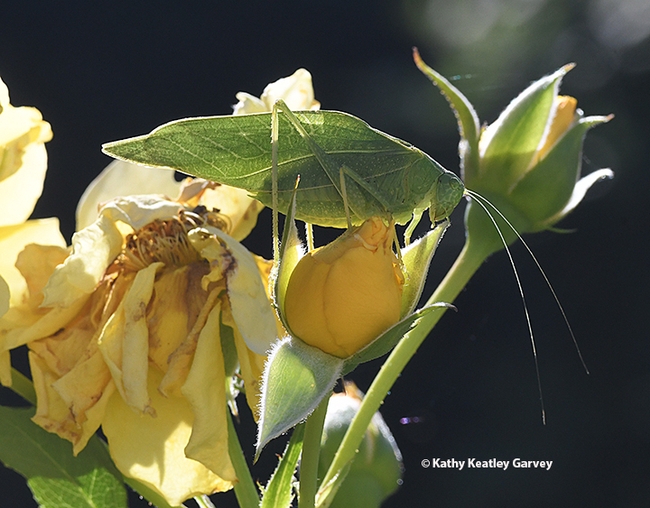
A katydid munching on a yellow rose, "Sparkle and Shine," in Vacaville. (Photo by Kathy Keatley Garvey)
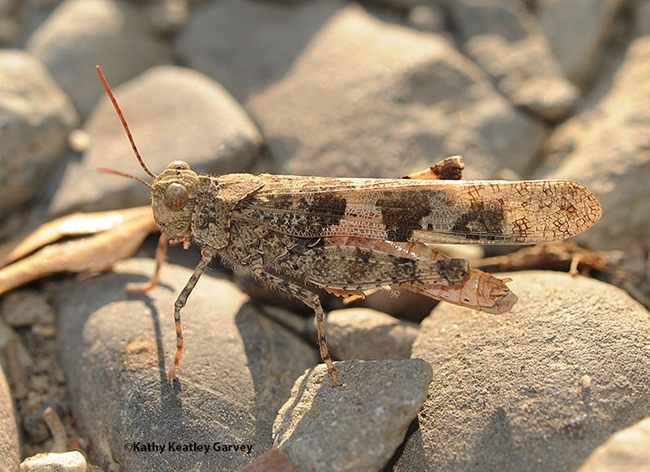
A banded-wing grasshopper, family Acrididae, settling on rocks in Vacaville. (Photo by Kathy Keatley Garvey)
Mark Your Calendars! Bohart Museum Announces Special Events
Mark your calendars! Mark your calendars for the eagerly awaited open houses and special events at the Bohart Museum of Entomology. The...
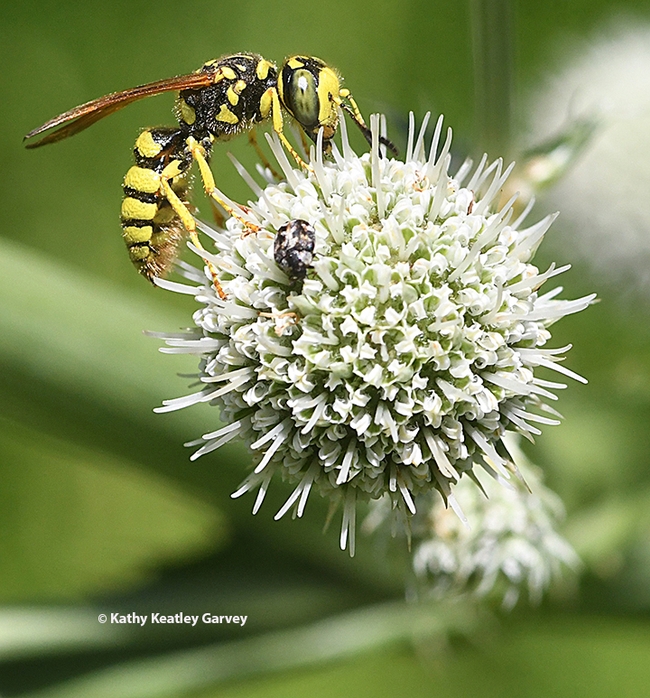
A crabronid wasp or beewolf in the genus Philanthus foraging on a pineapple sea lily (Eryngium horrium) in Vacaville. (Photo by Kathy Keatley Garvey)
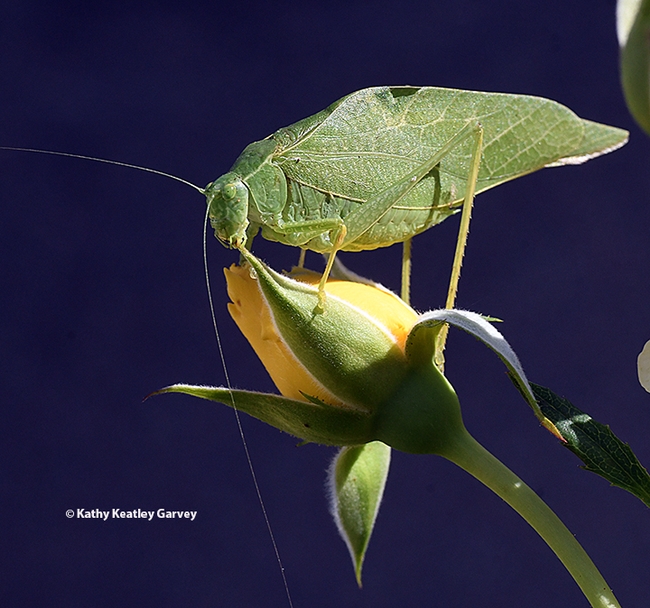
A katydid munching on yellow rose petals in a Vacaville garden. (Photo by Kathy Keatley Garvey)
Please Pass the Chocolate Chirp Cookies
Bugs: they're what's for dinner! Well, at some dinners. In. Many. Parts. Of. The. World. Distinguished professor Bruce Hammock of the UC Davis...

Chocolate Chirp Cookies, the work of Heather Baker, UC Davis graduate student studying malaria mosquitoes. (Photo by Kathy Keatley Garvey)

UC Davis Department of Entomology and Nematology cookie social! From left: account manager Guyla Yoak, contest coordinator; and winners Elvia Mayes, account manager; Steve Nadler, professor and chair of the department; Heather Baker, graduate student/mosquito researcher of the Shirley Luckhart lab; Stacey Rice, junior specialist of the Larry Godfrey lab; and Mimi Portilla, graduate student/mosquito researcher of the Sharon Lawler lab. (Photo by Kathy Keatley Garvey)
It's a good year for grasshoppers
A wet spring in 2011 set the stage for a grasshopper invasion in 2012, according to a story on KNVN News, the NBC affiliate in Northern California.
"Last year was a nice wet year, lots of feed. We had a chance for the population to build up. They lay eggs in the fall, those hatch in the spring so we got a lot more hoppers this year," said Joe Connell, UC Cooperative Extension advisor and county director in Butte County.
Grasshoppers can strip vegetable crops and vegetable gardens, Connell said. One of the best ways to protect the garden is to have a lush, green grassy area separate from the garden.
"You can either spray with a carbaryl insecticide or bait it with grasshopper bait, which can control their population," Connell said.
Gardeners who don't want to use insecticides can try buying chickens or guinea hens to keep grasshoppers under control.
Grasshoppers are devastating Mariposa greenery
A swarm of locusts cast a shadow over Egypt when Pharaoh wouldn't let Moses' people go. Throughout history, locust swarms in most parts of the world have been known to strip farmland and rangeland to the nub. Now, Mariposa County is faced with a devastating population of the voracious insect, according to an article in the Merced Sun-Star.
Reporter Carol Reiter spoke to the interim director of UC Cooperative Extension in Mariposa County, Maxwell Norton, about the 2011 grasshopper population. He explained that this year's wet weather was ideal for the winged pests. When the hills and rangelands where the grasshoppers hatch started drying out, the insects began invading gardens and crops in Mariposa by the thousands.
"They'll eat almost anything green," Norton was quoted. "People all over the foothills have been complaining about the numbers of them this year."
The article said Norton responded to the high grasshopper numbers by offering a seminar to Master Gardeners on how to keep gardens and plants safe from the insects.
He described the use of Semaspore bait for grasshopper control. After eating Semaspore, a product approved for organic gardeners, grasshoppers become sick, eat less and begin to die. The disease spreads to healthy grasshoppers when they eat their dying brethren. The product is safe for people, pets and the environment.
This article also appeared in the Modesto Bee, the Sacramento Bee and the Fresno Bee.
For more on grasshopper management in gardens and landscapes, see the UC IPM Pest Note about grasshoppers.
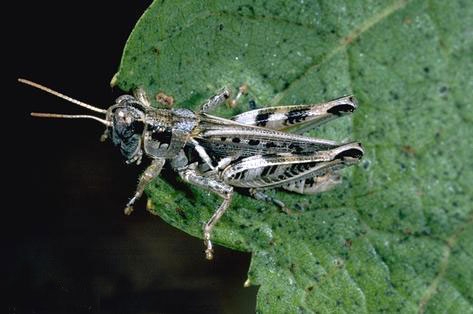
An adult devastating grasshopper, Melanoplus devastator.


